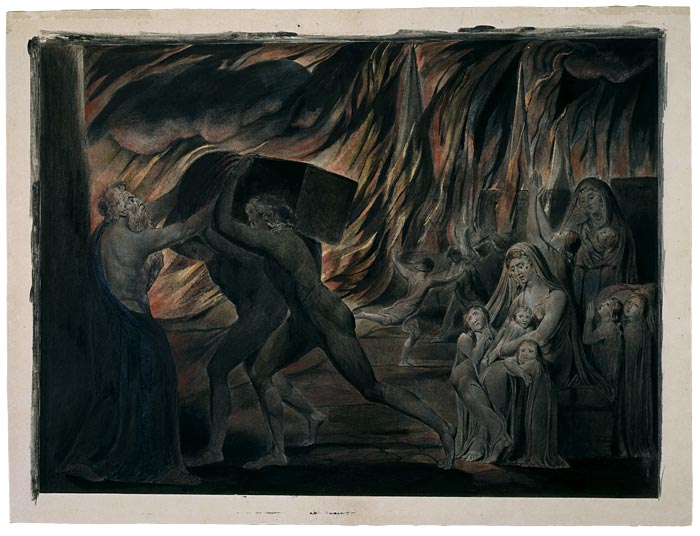
From about 1779 to 1805, Blake was occupied with the theme of war and the misfortunes associated with it. Fire, one of four watercolors commissioned by Thomas Butts, shows Blake's development of these themes. The three other drawings depict War (Fogg Art Museum, Harvard University, Cambridge, Massachusetts), Pestilence, and Famine (both in the Museum of Fine Arts, Boston). While it has been suggested that the series seems to refer not to the Bible but to the Litany—with Fire symbolizing "lightning and tempest"—it may also point to such contemporary events as the French Revolution, which Blake initially supported but shortly found appalling.
IV. The Continental Prophecies
In 1790, Blake moved to Lambeth, where he produced a trilogy of illuminated books called the Continental Prophecies that addressed the politically charged spirit of his age, embodied by the American and French revolutions. Along with Europe and The Song of Los, America depicts the oppression exercised by monarchies and religions represented by Urizen. Although godlike in appearance, Urizen is a legalistic, despotic figure.
Another central figure is Orc, representing the spirit of revolt, who is frequently associated with images of fire. The frontispiece represents the destruction of war, while the text refers to George Washington, Thomas Paine, and other contemporary figures. America exists in only fourteen copies, five of which were colored and printed during Blake's lifetime. The Morgan also owns an uncolored copy.
